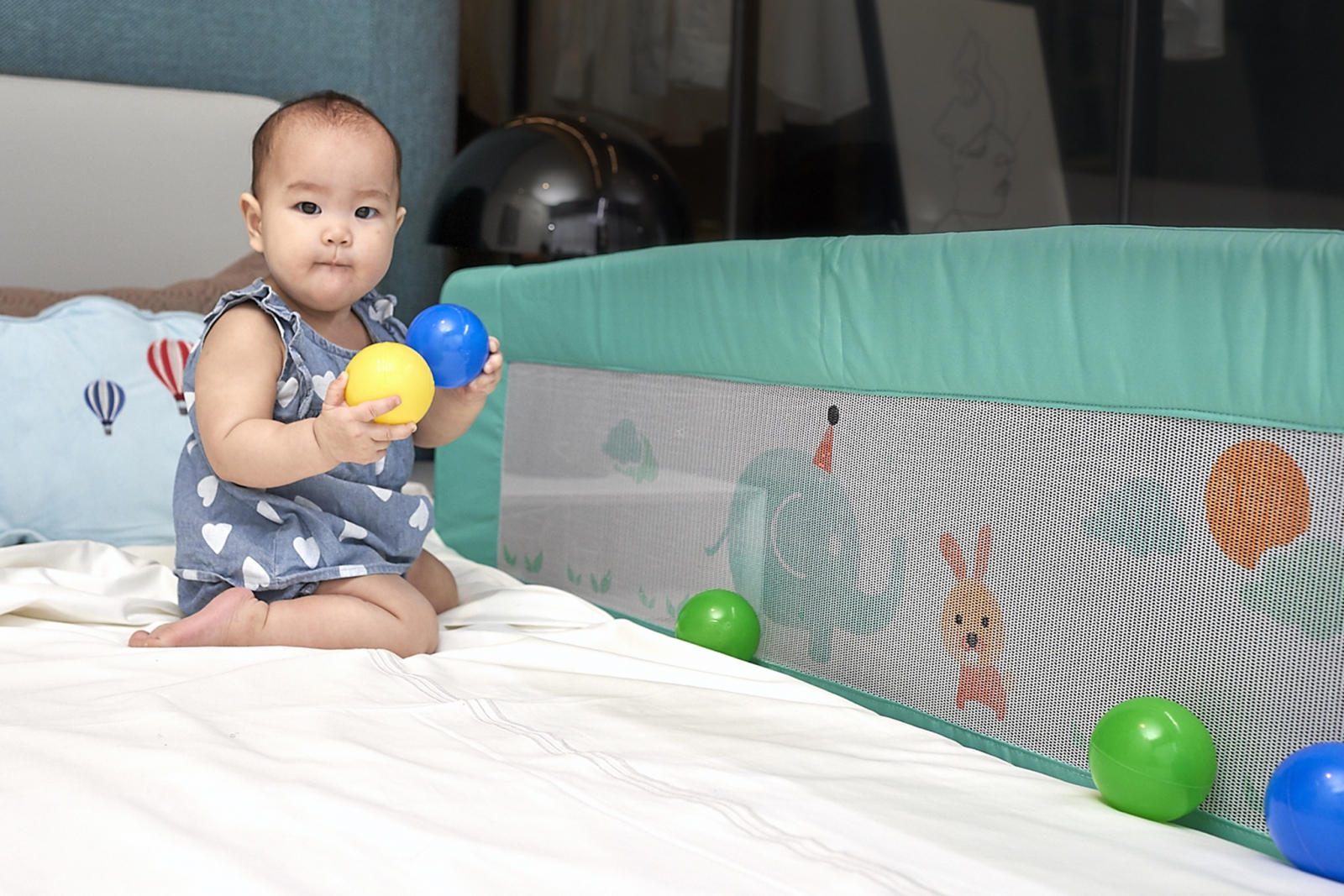Children's Safety Gate: Usage and Environmental Considerations
「Why do we need children's safety gates?」
Every parent has witnessed their child accidentally getting hurt, even if it's just a minor scrape or bruise, it's heartbreaking and fills parents with guilt.
Guess where children are most likely to have accidents: at the park, market, restaurant, school, or at home?
Many people might not realize it, but what we consider the safest place – home – can actually be the most dangerous playground for children!
And a simple safety gate can reduce the occurrence of these home accidents to a minimum!
「When should you start using safety gates or enclosures?」
Crawling, sitting, standing, walking, and running are the five main developmental stages in a baby's motor skills progression.
Around 8-9 months old, babies typically begin to learn how to crawl naturally. Once they start crawling, it's important to prepare one or more safety gates or enclosures in the home to prevent them from accessing dangerous items or areas. Creating a safe area for the baby to crawl freely not only keeps them away from potential home accidents but also allows them to explore and play safely, enjoying a carefree environment.
From 1 to 2 years old is the first rebellious period for babies. They become more sensitive emotionally and start imitating adult behaviors, actively exploring and challenging their surroundings. During this time, babies may grab items, mess with power switches, attempt to climb to high places, or open cabinets unpredictably, leading to an increased risk of accidents.
A well-designed, sturdy safety gate, in good condition with no damaged parts, can be safely used for over 2 years, until the baby's height exceeds three-quarters of the gate's height or until they learn to unlock the safety gate on their own.
「Where is the most dangerous area in the home? Let me tell you about the top three high-risk areas!」

According to the research by the Jing-Juan Foundation, over 35% of children have experienced accidental injuries at home, with "falls" being the most common, surpassing "collision, crush, impact, and pinch injuries" caused by furniture, which ranks second. However, the majority of these home accidents can be prevented!
How to determine which areas of the home should use child safety gates?
Why not get down on your hands and knees at home and observe the environment from a baby's perspective? Babies are curious about the world around them, and any place that might attract their attention visually, audibly, or olfactorily could hide unseen dangers!
Common places for baby home accidents:
1.Areas with elevation differences:For homes with stairs, lofts, elevated platforms, high thresholds, or slopes, the uneven terrain poses a high risk of tripping and falling accidents, especially for toddlers with small and unsteady steps.
2.Home facilities:Everyone knows about the dangers in the kitchen and bathroom, but the area where parents are most likely to overlook and be careless is the living room. Since the furniture in the living room is designed and sized for adults, it poses a significant risk to toddlers who are just learning to climb up and down. Before taking proper precautions, the likelihood of toddlers getting injured in the living room surpasses that of the kitchen and bathroom, making it the number one danger zone in the home!
3.Entrances and exits:Whether it's the front door or the door to the balcony, the outside world is full of temptations for curious toddlers. If adults in the house aren't paying attention, toddlers might sneak out and put themselves in unnecessary danger!
During the process of a baby's growth, they often engage in unexpected actions, such as climbing to places they shouldn't or touching things they shouldn't. To ensure the safety of your little one, safety gates and fences are definitely your best companions. They allow you to relax without worrying about your baby getting hurt. By taking proper precautions, you can ensure that your family spends each day safely and happily.